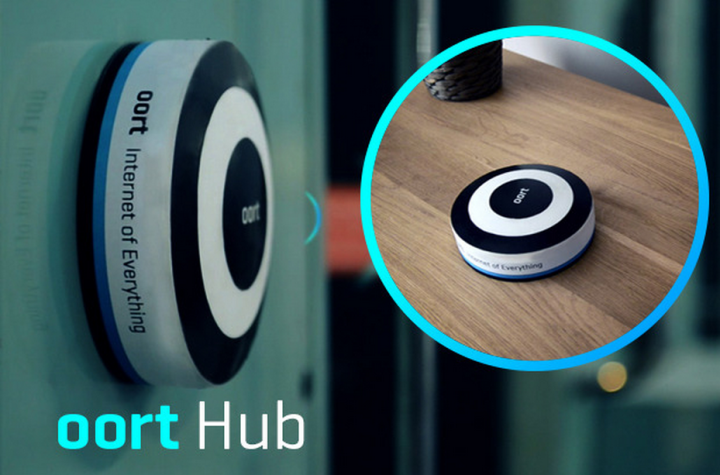
By now, chances are pretty good that you’ve got at least a couple Bluetooth-enabled devices somewhere in your house. In the past few years, the humble short range wireless networking protocol has become fairly ubiquitous, and can now be found in everything from TVs and speakers, to lightbulbs and microwaves. It’s not just for those annoying hands-free headsets anymore. Increasingly, Bluetooth LE is becoming the go-to communication protocol for home automation.
If you’ve already got a smattering of different Bluetooth-enabled devices floating around your house, you might want to check out Oort — a fresh new hardware project that hit Kickstarter a few days ago. With this simple little hub and the accompanying app, you can finally have a centralized access point for all of your BLE devices, and control them all from the same place.
To be sure, this definitely isn’t the first device (or app) that aims to unify all of your disparate, disconnected smart home contraptions. Hubs like Revolv, NinjaSphere, and a handful of others have already taken a stab at the problem, but Oort is a little bit different. Instead of supporting every standard under the sun, the device works exclusively with Bluetooth. It does support WiFi as well, but it’s only to give you access and control of your Bluetooth devices from anywhere in the world, and as far as we can tell, you can’t sync devices via WiFi.
The creators of Oort are making a big bet that Bluetooth low energy (also known as Bluetooth Smart) will become the dominant radio standard for the Internet of Things, and are trying to stay ahead of the curve by creating an app that can speak to a broad range of different Bluetooth profiles. Once it’s released, the Oort app will be able to communicate with and control just about any Bluetooth device you’ve got, be it a bike lock or a smart thermostat. It’ll also make it possible for you to string devices together, activate/deactivate devices on a schedule, and even create custom automations.
We’re not entirely convinced that Bluetooth is going to overcome WiFi, Zigbee, Z-Wave, and other networking protocols to become the kind of home automation and the Internet of things, but even so, it’s clear that Bluetooth is quickly becoming more popular, so we’re glad to see startups like Oort developing products that focus on it.
Find out more here.
Editors' Recommendations
- How to prevent your Ring smart camera from being hacked
- How to protect your smart home from hackers
- Smart homes without Wi-Fi: Huge possibilities or roadblocks?
- HomeValet launches the Smart Box, a secure container for all your deliveries
- The Home Connectivity Alliance wants to bring you the smart home of your dreams




